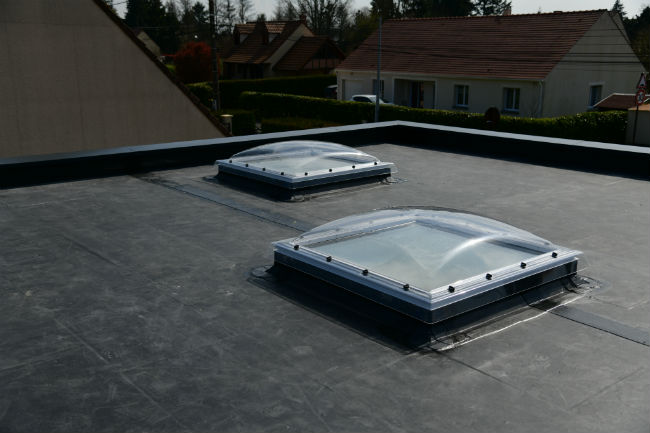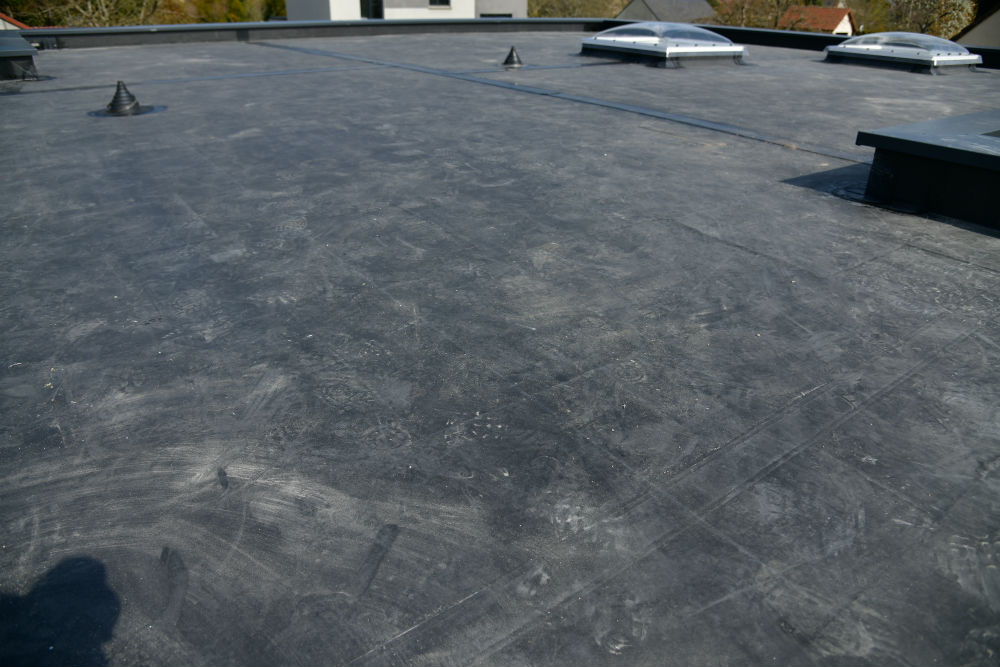EPDM (Ethylene Propylene Diene Monomer) represents a class of commercial roofing systems that provide a wide range of benefits for buildings with flat or low-slope roofs. If you’re weighing the pros and cons of EPDM, the Denver roofing professionals at A-to-Z Roofing & Exteriors are here to help by providing you with a topical overview of this tried-and-trusted commercial roofing solution.
What is an EPDM Roof?
Also called a ‘rubber roof’, an EPDM roof is composed of a thick, resilient layer of protective rubber compound that acts as a shield against the elements as well as an insulator for the building. This type of roof was initially developed to be an alternative to traditional, petroleum-based roofing.
Because EPDM roofs can be manufactured using reflective materials, they are very environmentally friendly. For colder climates, a black EPDM roof is a great option, as the material can absorb heat from the sun and reduce energy consumption costs in the winter.
Alternatively, EPDM rubber can be made in shades of white, an excellent option for commercial buildings located in warmer areas. This makes EPDM a very versatile roofing system that works well for a broad variety of building types.

The Benefits of EPDM Roofing
First and foremost, EPDM is an attractive commercial roofing option because it’s recyclable. This makes it easy to repurpose after it reaches the end of its lifespan, which raises the question, “How long does an EPDM roof last?”.
The answer might surprise you. A properly installed EPDM roof can last as long as 50 years. The reason for this is because new advances in rubber formulations make for a roofing material that stands up exceptionally well to UV radiation and weathering. So, the durability and reliability of EPDM makes it an outstanding choice for those looking for long-term benefits.
Next on the list of EPDM roofing benefits is efficiency. Because the roofs of commercial buildings endure so much exposure to direct sunlight, the materials used on them wind up playing an important role in how much energy the building consumes to stay cool or warm using its industrial HVAC system. With a more protective roof that reflects heat (a white EPDM system), cooling costs can be reduced as much as 20% or more for some buildings.
Commercial building owners also look to EPDM as a roofing solution because it’s cost-effective. All it takes is a one-time installation of a single-ply EPDM layer, and most commercial roofs can be protected for decades. To give you an idea of cost, a 2,500 square-foot commercial roof could be completely covered with an EPDM membrane for about $6 per square foot ($15,000 total). That’s a bargain compared with TPO or PVC roofing alternatives.
Other EPDM Roofing Considerations
When the time comes to repair damaged areas of an EPDM roof, a quick patching job can often take care of any zones damaged by harsh Colorado weather including hail storms or falling debris.
Also, EPDM roofing is impervious to water leaks. When installed correctly, an EPDM roof can be relied upon to effectively protect the building from water ingress even during torrential downpours or weeks-long stretches of rainy weather. If there are any areas where water pools or puddles on the roof, not to worry—an EPDM roof is not going to be compromised in the slightest due to standing water.
Disadvantages of EPDM Roofing Systems
There are a few cons when it comes to choosing EPDM over other commercial roofing options.
For one, an EPDM roof installation is not something you can do yourself (unless you happen to be a commercial roofing expert!). Only a trained, knowledgeable roofing team who knows how to perform an expert installation can properly install an EPDM roof.
Another con for some building owners is the appearance. EPDM membranes are flat, colorless, and plain. There are no patterns or design features. This isn’t a detractor for many people, as the roof isn’t necessarily on display for most commercial buildings.
Lastly, EPDM doesn’t stand up very well to petroleum-based products like some industrial adhesives or shielding materials. So, it’s wise to evaluate whether or not these substances will come into contact with an EPDM roof before pulling the trigger on installation.
Looking for a Quote for an EPDM Roof? Contact Us!
If you’re in the market for a new EPDM roof in Denver, or if you have questions about whether or not EPDM is right for your flat or low-slope roof, contact A-to-Z Roofing & Exteriors, today.
We look forward to working with you!

